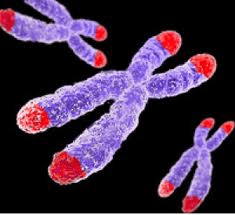BioViva’s CEO Claims to Have Longer Telomeres After Gene Therapy

 BioViva reported last week that the company’s CEO, Elizabeth Parrish, successfully reversed biological ageing after being treated with the biotech’s therapies. The Seattle-based company confirmed that Parrish reversed 20 years of telomere shortening thanks to an experimental gene therapy.
BioViva reported last week that the company’s CEO, Elizabeth Parrish, successfully reversed biological ageing after being treated with the biotech’s therapies. The Seattle-based company confirmed that Parrish reversed 20 years of telomere shortening thanks to an experimental gene therapy.
BioViva aims to provide regenerative medicine solutions through gene and cell therapies. The company is involved in several research lines to combat atherosclerosis, Alzheimer’s, Sarcopenia and skin ageing. Their main goal is to address biological ageing by implementing genetic rejuvenation treatments. By “curing” ageing, all age-related diseases could be avoided. Experimental therapies aimed to extend longevity have been carried out before in model organisms: in 2012, María Blasco’s team at the Spanish National Cancer Research Centre (CNIO) extended the lifespan of mice subject to telomerase gene therapy. Telomerase lengthens telomeres, the protective caps of chromosomes, which are shortened in somatic cells after each division due to the end replication problem. When telomeres become too short, cells die or stop replicating, contributing to tissue degeneration.
Patient zero of a non-regulated clinical assay
Elizabeth Parrish decided to receive BioViva’s telomerase gene therapy. To avoid FDA regulations, she flew to Colombia, where she was injected with the telomerase gene; additionally, she received gene therapy to combat muscle mass loss. Parrish’s telomeres length was measured in SpectraCell‘s facilites before and after treatment; according to the results, her white blood cells’ telomeres are 0.62 kb longer now, which would imply that the leukocytes are 20 years younger. The results were verified by the non-profit HEALES (HEalthy Life Extension Company), and the Biogerontology Research Foundation.
It remains to be demonstrated that telomere lengthening in Parrish’s leukocytes increases her immune system activity and cell lifespan. On the other hand, unwanted side effects could appear: longer telomeres and increased telomerase activity correlate with cancer incidence. No data is available yet regarding the effect of the second gene therapy on muscle mass. Finally, it must be stressed that the results have not been published in any scientific journal and have not been subject to a peer-review process.
Source: BioViva
